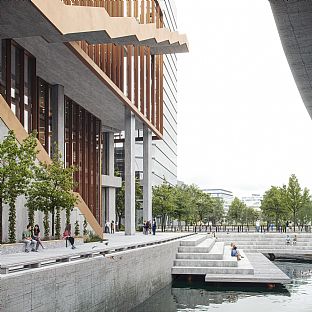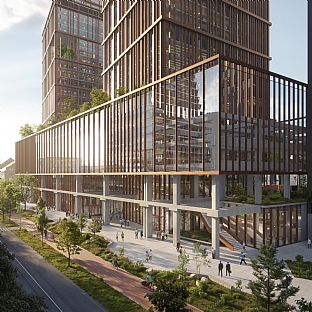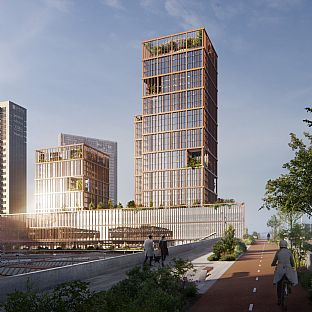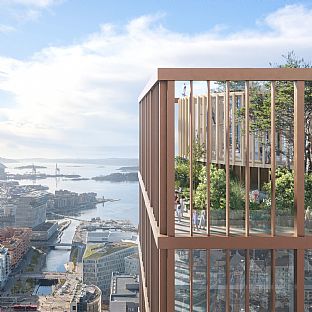Images of the new proposal for Oslo Horisont - KLP’s high-rise hub – have been submitted to PBE / Oslo planning authority. The scheme seeks to transform a former post office terminal into a new gateway to Oslo Central Station rail platforms, and to create a commercial multi-tenant office hub with 3500 workspaces, a hotel/ conference centre, foodcourt, cafe and bicycle parking.
Today, the post office terminal has few visitors, occupies a large area and is perceived as a massive, inward-looking building volume. The post office terminal will be converted into a multifunctional building with a range of different purposes. The existing concrete structure will serve as a base for the high-rise buildings and ensure that a part of Oslo's history is preserved. The reuse strategy retains 30,000 m² of concrete, making Oslo Horisont one of Norway's largest transformation projects.




